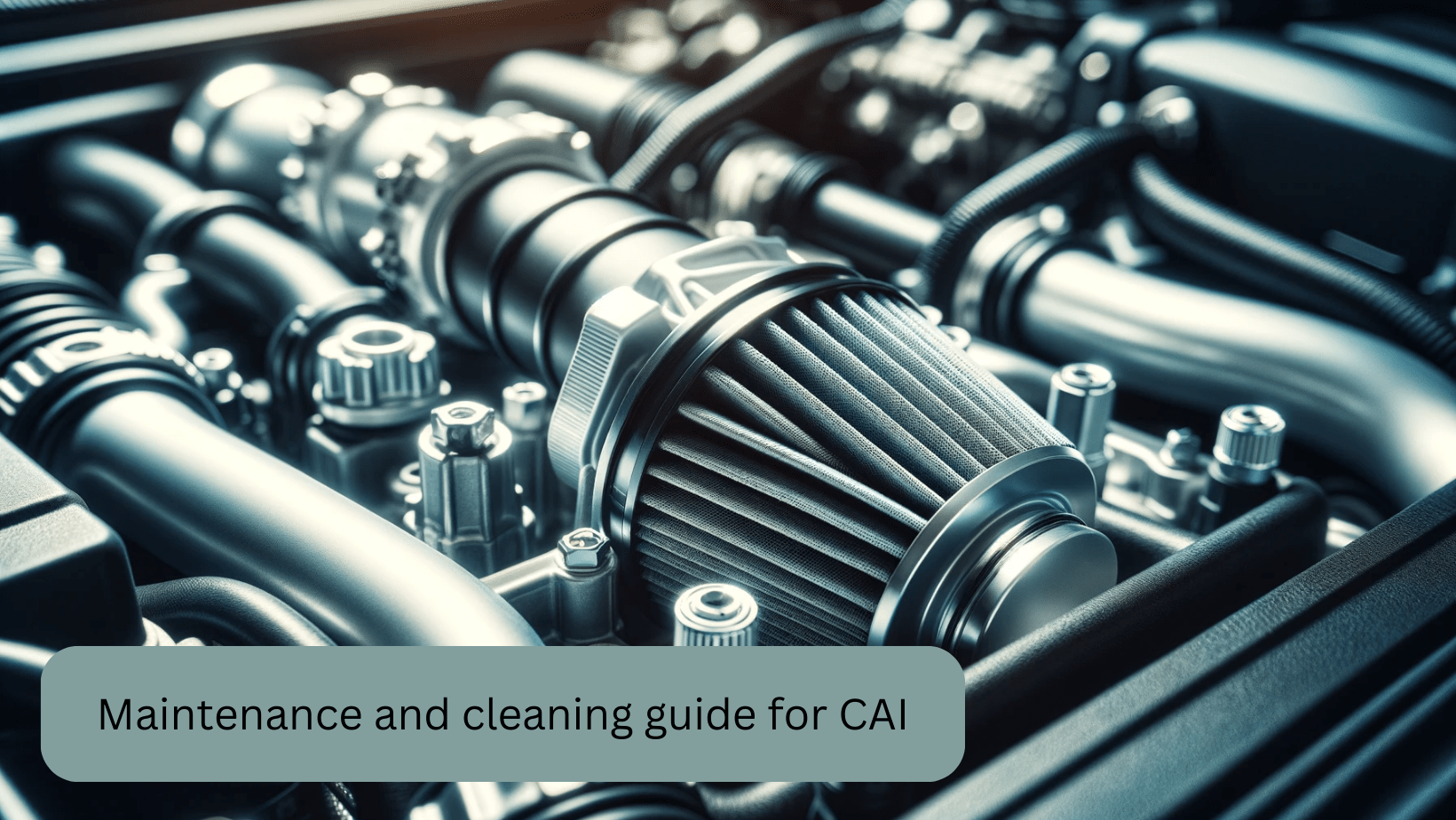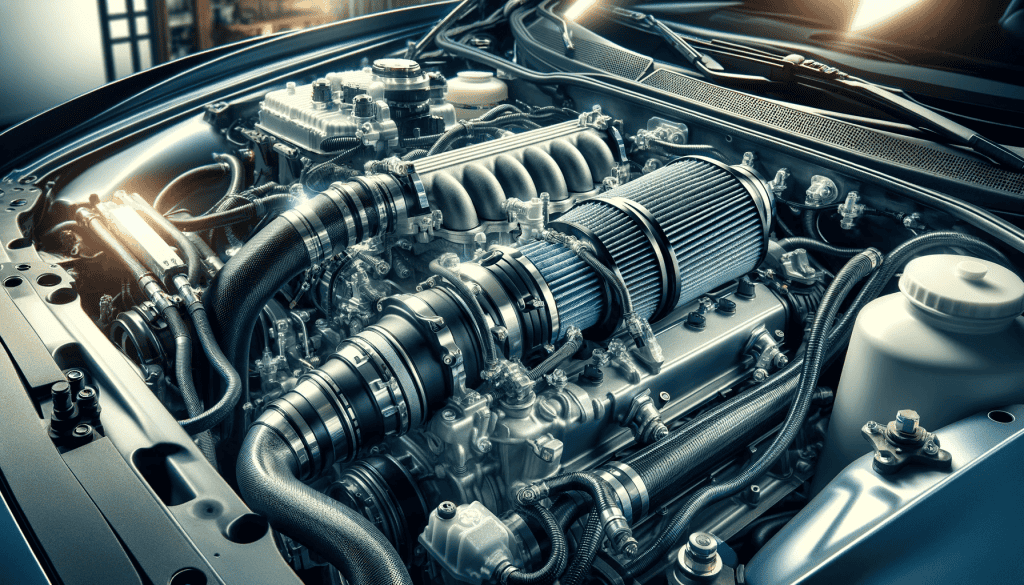Table of Contents
Cold Air Intake Benefits: Maintenance and Cleaning for Peak Performance (2025)
Cold air intake (CAI) systems are a popular upgrade for vehicle owners seeking better horsepower, fuel efficiency, and throttle response. However, maximizing these benefits depends on regular maintenance and cleaning. A well-maintained CAI ensures optimal airflow, prevents contaminants, and extends the lifespan of both the intake system and the engine.

Key Takeaways
✔ Increased Horsepower → Cooler air enhances combustion, improving power output.
✔ Better Fuel Efficiency → Efficient fuel burning leads to better mileage.
✔ Extended Engine Longevity → Clean air intake prevents harmful contaminants.
✔ Routine Cleaning is Essential → Ensures unrestricted airflow and maintains performance.
✔ Different Filter Types Require Specific Maintenance → Dry, oiled, and disposable filters have unique upkeep needs.
How Cold Air Intakes Improve Vehicle Performance
Cold air intakes reroute the intake system away from the engine’s heat, allowing the vehicle to draw in cooler air. Since cooler air is denser and oxygen-rich, it enhances combustion, leading to:
Higher Horsepower → More oxygen allows the engine to generate more power.
Improved Throttle Response → Faster combustion improves acceleration.
Better Fuel Efficiency → More efficient combustion reduces fuel consumption.
Engine Protection → Clean air prevents dirt and debris from harming engine components.
Maintenance and Cleaning: The Cornerstones of Performance
| Maintenance Action | Recommended Frequency | Description |
|---|---|---|
| Air Filter Inspection | Every 15,000 to 30,000 miles | Check for dirt buildup. Clean or replace if necessary. |
| Air Filter Cleaning (Reusable Filters) | Every 30,000 to 50,000 miles | Clean using appropriate solutions and re-oil if necessary. |
| Intake Tube Inspection | Every 12 months | Check for obstructions, leaks, or damage. |
| Complete System Check | Every 12 to 24 months | Inspect for loose fittings, cracks, or worn-out parts. |
| Air Filter Replacement (Disposable Filters) | As per manufacturer’s recommendation | Typically replaced every 15,000 to 30,000 miles, depending on usage. |
Neglecting maintenance can lead to restricted airflow, reduced performance, and increased fuel consumption.
Step-by-Step Guide: How to Clean and Maintain a Cold Air Intake
1. Air Filter Maintenance: The Most Critical Step
- Dry Filters → Tap out dust and debris; use compressed air if needed.
- Oiled Filters → Wash with filter cleaner, let dry, and apply oil evenly before reinstalling.
- Disposable Filters → Replace according to manufacturer guidelines.
2. Intake Tube and Components Cleaning
✔ Check for clogs, oil buildup, and debris inside the tubing.
✔ Use a microfiber cloth and mild cleaner to wipe out dust and grime.
✔ Ensure all clamps and seals are secure to prevent leaks.
3. Inspect for Wear and Tear
Look for cracks, loose fittings, or disconnected hoses.
Replace worn-out clamps or tubes before they cause airflow issues.
4. Ensure Proper Fitment After Cleaning
✅ Always reassemble securely to prevent vibrations and leaks.
✅ Double-check connections before starting the engine.

Understanding Different Types of Air Filters
| Filter Type | Maintenance Required | Replacement Schedule | Best Use Case |
|---|---|---|---|
| Dry Filters | Regular dusting or compressed air cleaning | Replace every 30,000 miles | Daily drivers, urban areas |
| Oiled Filters | Clean and re-oil every 30,000-50,000 miles | Reusable with proper care | Performance vehicles, off-road use |
| Disposable Filters | No maintenance, replace when dirty | Replace every 15,000-30,000 miles | Low-mintenance drivers |
Real-Life Examples: How Proper Maintenance Impacts Performance
✔ Case Study #1: Sports Car Power Boost
A Mustang GT owner cleaned their oiled filter every 30,000 miles and noticed a steady 10 HP gain over time compared to a neglected intake.
✔ Case Study #2: Truck Fuel Efficiency Improvement
A Ram 1500 owner replaced their disposable air filter every 20,000 miles and saw a 1-2 MPG increase in fuel economy on highway drives.
Consistent maintenance leads to measurable improvements in performance, efficiency, and engine longevity.
Common Cold Air Intake Maintenance Mistakes to Avoid
Skipping Regular Cleaning → Leads to clogged filters, reduced airflow, and power loss.
Over-Oiling an Oiled Filter → Can cause excess oil buildup, contaminating the mass airflow sensor (MAF).
Using the Wrong Cleaning Products → Harsh chemicals can damage filter materials and reduce effectiveness.
Ignoring Intake Tube Leaks → Small leaks can decrease performance and efficiency over time.
Proper care ensures maximum airflow, efficiency, and engine health.
How Cold Air Intakes Affect Fuel Efficiency
While the main goal of a CAI is performance enhancement, fuel efficiency can also improve.
| Driving Conditions | Stock Intake MPG | Cold Air Intake MPG | Improvement |
|---|---|---|---|
| City Driving | 18-22 MPG | 20-24 MPG | +1-2 MPG |
| Highway Driving | 28-30 MPG | 30-33 MPG | +2-3 MPG |
A clean and well-maintained CAI further optimizes fuel economy.
Q&A: Common Cold Air Intake Maintenance Questions
| Question | Answer |
|---|---|
| How often should I clean my cold air intake filter? | Every 30,000-50,000 miles for reusable filters, or as specified by the manufacturer. |
| Can a dirty air filter reduce horsepower? | Yes, a clogged filter restricts airflow, leading to less efficient combustion and power loss. |
| Does over-oiling an oiled filter cause issues? | Yes, excess oil can contaminate the MAF sensor, causing performance issues. |
| Will a clean CAI improve my MPG? | Yes, a clean intake optimizes airflow, which can slightly improve fuel economy. |
| Can I use soap and water to clean my filter? | No, use filter-specific cleaners to avoid damage. |
| Do disposable filters need any maintenance? | No, they should be replaced every 15,000-30,000 miles. |
| What happens if I don’t maintain my CAI? | Neglecting maintenance can reduce horsepower, worsen MPG, and shorten engine lifespan. |
Final Thoughts: Why Maintenance is Key for Cold Air Intake Systems
Cold air intakes offer significant performance benefits, but maintenance is essential to preserve those gains. Regular cleaning, filter inspections, and system checks ensure that your engine breathes efficiently, maximizing horsepower, throttle response, and fuel efficiency.
✔ Benefits of Proper CAI Maintenance:
✔ Ensures peak horsepower and acceleration
✔ Improves fuel economy
✔ Extends engine and intake lifespan
✔ Reduces engine wear from contaminants
✔ Maintains consistent throttle response
A well-maintained cold air intake is the key to long-term performance gains.
Additional Resources
Check out the best performance car gear available on the market.
